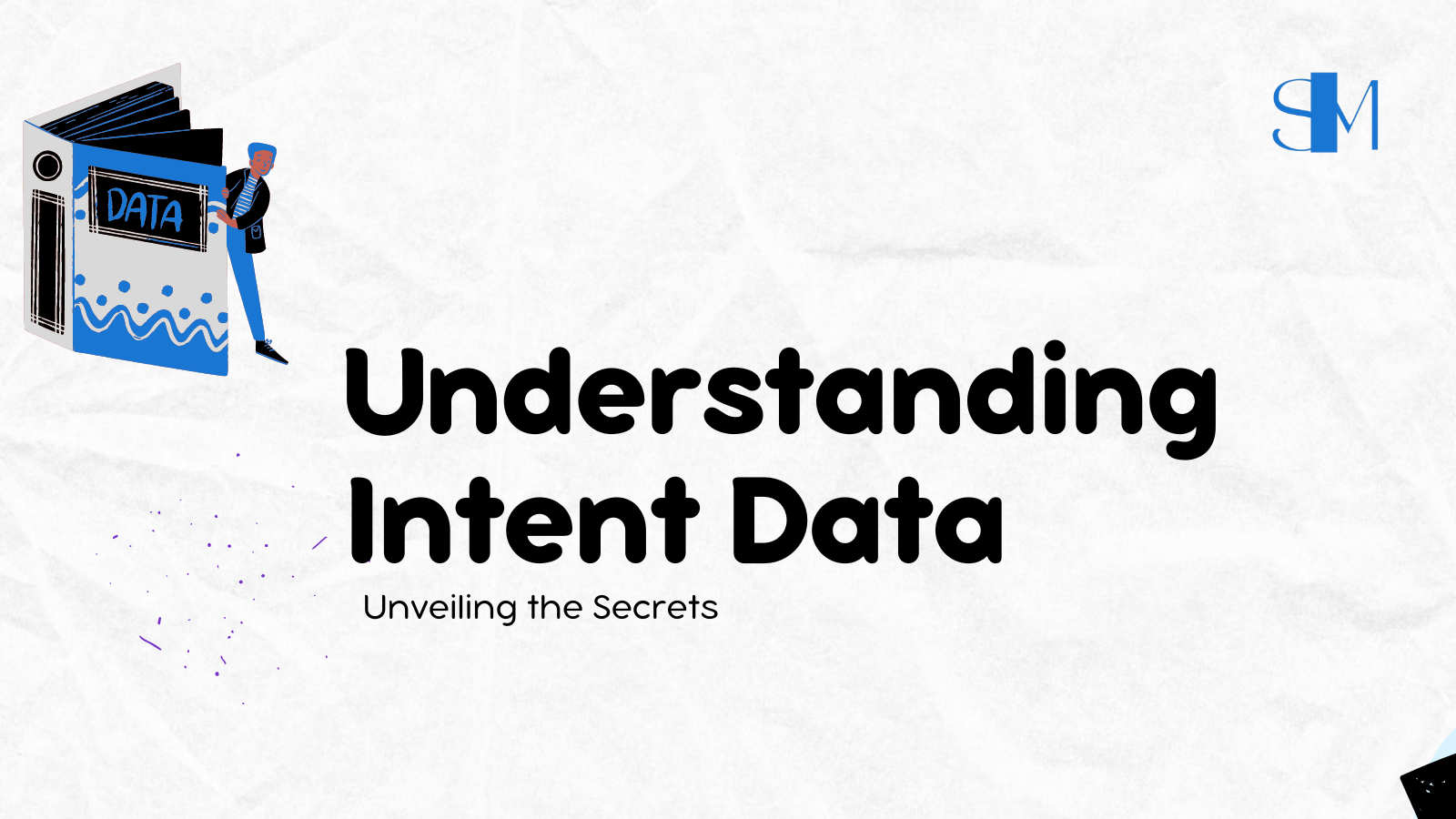Understanding Intent Data: Unveiling Its Secrets
 Empowering Your SaaS Journey.
Empowering Your SaaS Journey.
Introduction
Understanding customer intent is paramount to success. Ever wondered why some businesses succeed with their marketing campaigns while others seem to miss the mark entirely? The secret ingredient? It's all about understanding your customers inside out, and that's where intent data steps in.
In this article, we'll delve into the fascinating domain of driving sales and marketing with intent data. We'll explore how this powerful tool unveils the hidden treasures of customer behavior, preferences, and buying signals.
From understanding its types and uncovering its sources to reaping its benefits and crafting winning strategies, let's embark on a journey to supercharge your sales and marketing endeavors with intent data.
Types of Intent Data
Intent data is categorized into three primary types: first-party, second-party, and third-party intent data. Each type originates from distinct sources, including proprietary customer data, collaborative partnerships, and external data aggregators.
First-party Intent Data: This type of intent data is collected directly from interactions and engagements with your own digital properties and platforms. It includes data from your website, app, CRM, email marketing campaigns, and social media channels. First-party intent data provides insights into the behavior and interests of your existing audience or customers.
Second-party Intent Data: Second-party intent data involves data that another organization shares with you directly. It is essentially someone else's first-party data that you acquire through a partnership, collaboration, or data sharing agreement. Second-party data can offer valuable insights into a specific audience segment or market.
Third-party Intent Data: Third-party intent data is collected from external sources and providers. It encompasses a broader view of buyer intent across various online platforms, websites, and networks. Third-party data is often aggregated from multiple sources and can provide insights into broader market trends, industry behaviors, and audience interests.
Different Sources of Intent Data
Various channels and platforms are employed to collect intent data, including search engines, social media platforms, website analytics, and third-party data providers. These sources offer valuable insights into customer behavior and preferences.
Search Intent Data: Derived from users' online searches and queries on search engines like Google, Bing, and Yahoo. Search intent data reveals the topics, keywords, and phrases that users are actively seeking information about.
Firmographic Data: Details about companies, including industry, size, revenue, location, and other organizational attributes. Firmographic data helps businesses identify and target specific types of companies that match their ideal customer profiles.
Engagement Data: Indicates how users interact with content, including website visits, page views, social media interactions, email opens, clicks, shares, and comments. Engagement data provides insights into user preferences, interests, and levels of interaction with marketing materials.
Driving Sales and Marketing with Intent Data
Driving sales and marketing with intent data involves leveraging valuable insights derived from customer behaviors to tailor campaigns, optimize outreach efforts, and maximize conversion rates. Here's how businesses can effectively utilize intent data to enhance their sales and marketing strategies:
Identify High-Intent Prospects: By analyzing intent signals such as website visits, content engagement, and search queries, businesses can identify prospects exhibiting high levels of purchase intent. Prioritizing these leads allows sales teams to focus their efforts on prospects most likely to convert, increasing the efficiency of their sales pipeline.
Personalize Marketing Campaigns: Intent data enables businesses to create personalized marketing campaigns tailored to the specific needs and interests of their target audience. By understanding customer preferences and behaviors, marketers can deliver relevant content and offers at each stage of the buyer's journey, increasing engagement and driving conversions.
Optimize Content Strategy: Analyzing intent data helps businesses gain insights into the types of content that resonate most with their target audience. By identifying popular topics, keywords, and formats, marketers can optimize their content strategy to attract and engage prospects more effectively, ultimately driving traffic and generating leads.
Improve Sales Enablement: Intent data equips sales teams with valuable insights into prospect interests and pain points, enabling more informed and targeted sales conversations. By understanding prospect behavior and preferences, sales representatives can tailor their messaging and recommendations to address specific needs, increasing the likelihood of closing deals.
Measure and Iterate: Utilizing intent data allows businesses to track the effectiveness of their sales and marketing efforts in real-time. By monitoring key metrics such as engagement rates, conversion rates, and customer acquisition costs, businesses can identify areas for improvement and make data-driven adjustments to optimize their strategies over time.
Conclusion
In conclusion, intent data represents a valuable resource for businesses looking to gain deeper insights into customer behavior and drive targeted sales and marketing initiatives.
By leveraging the diverse sources and types of intent data available, businesses can enhance customer engagement, improve conversion rates, and ultimately achieve their business objectives in today's competitive landscape.
As technology continues to evolve, the strategic use of intent data will remain integral to driving sustainable growth and success in the digital age.
Subscribe to my newsletter
Read articles from Empowering Your SaaS Journey. directly inside your inbox. Subscribe to the newsletter, and don't miss out.
Written by

Empowering Your SaaS Journey.
Empowering Your SaaS Journey.
Greetings ! My name is Rupesh. With over 7 years of hands-on experience in the B2B SaaS and service domain, I am dedicated to empowering SaaS founders with valuable resources and actionable advice. My mission is to equip entrepreneurs with the knowledge and insights needed to succeed in the competitive world of SaaS.